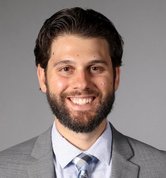Stand up for the facts!
Our only agenda is to publish the truth so you can be an informed participant in democracy.
We need your help.
I would like to contribute
5 years later, Medicaid opt-outs create holes in ‘universal’ bill
As the Affordable Care Act turns five, we thought it was time to look again at how its coverage provisions are doing. Overall, it's been a mixed picture.
Undoubtedly, the law has led to fewer uninsured Americans. The percentage of uninsured adults in the United States in 2010 was 16.4 percent; at the end of 2014, it had fallen to 12.9 percent, its lowest point since Gallup started tracking the insured population in 2008.
But once expected to insure 32 million new Americans by the end of the decade, the projected target has now been downgraded to 27 million — far from the universal coverage many proponents hoped for. The nonpartisan Congressional Budget Office projects there will still be roughly 31 million uninsured adults in the United States by 2025, demonstrating that any notion the law would create universal coverage was a pipedream.
Part of this is because in 2012, the U.S. Supreme Court gave made it optional for states to expand Medicaid, a health insurance program intended for the very poor.
"I don't think anyone anticipated when the law was written that states would have the opportunity to opt-out of the Medicaid expansion," said Christine Eibner, senior economist at the Rand Corporation. "That's a major departure from the law's initial intent, and it leaves an estimated 4 million people in a coverage gap."
Twenty-two states — including Florida — have so far refused expansion, and health care advocates continue to hope legislatures will act to embrace provisions of the law affecting Medicaid. Florida is one of six states currently considering a Medicaid expansion; it's estimated that embracing the program would cover 800,000 more people there.
In addition to those who are left out of Medicaid, about 30 percent of the remaining uninsured are illegal immigrants; the law never intended to cover them. But about 40 to 45 percent are people who will choose not to purchase insurance offered to them either through the marketplaces or through an employer, in many cases because they still can't afford it. The law exempts people from paying a penalty who have incomes so low they don't file tax returns.
Finally, we should mention uncertainty about people who buy private insurance through health care marketplaces or exchanges. The Supreme Court is considering King vs. Burwell, in which plaintiffs allege the law says people are not eligible for subsidies if they buy from a marketplace run by the federal government, as opposed to a state. The law's supporters say the argument is without merit, but it's not clear if the court will see it the same way. A decision is expected in June.
If the court does rule against the Obama administration, millions of people could lose their subsidies for coverage. The Rand corporation estimates that sort of change would lead to a 47 percent increase in individual market premiums in the affected states, and 8 million people could become uninsured.
For right now, we're basing our rating on the outcome of the Medicaid provisions, which haven't been enacted as the law envisioned. There's also greater clarity about the population that will remain uninsured despite the law's mandates and coverage provisions. We rate this promise Compromise.
Our Sources
PolitiFact, The federal health care law: What came true and what didn't, March 20, 2015

